
Dragons are amongst the most essential players in nearly every type of folklore in the world. While many might classify them as something specific to Asian traditions, European and western culture have also enjoyed their fair share of mythological dragons, that played a great role in inspiring timeless tales and long-lasting stories. And there's no question why.
Dragons are powerful mythical beasts, known for fire-breathing, invincibility, and strength. These serpent-like creatures have stood as both heroes and villains in different epics and each culture depicts them in a unique way, inspired by the imbibed traits of these monstrosities. Let's travel the world via dragons and see how different mythologies revered their individual dragons.
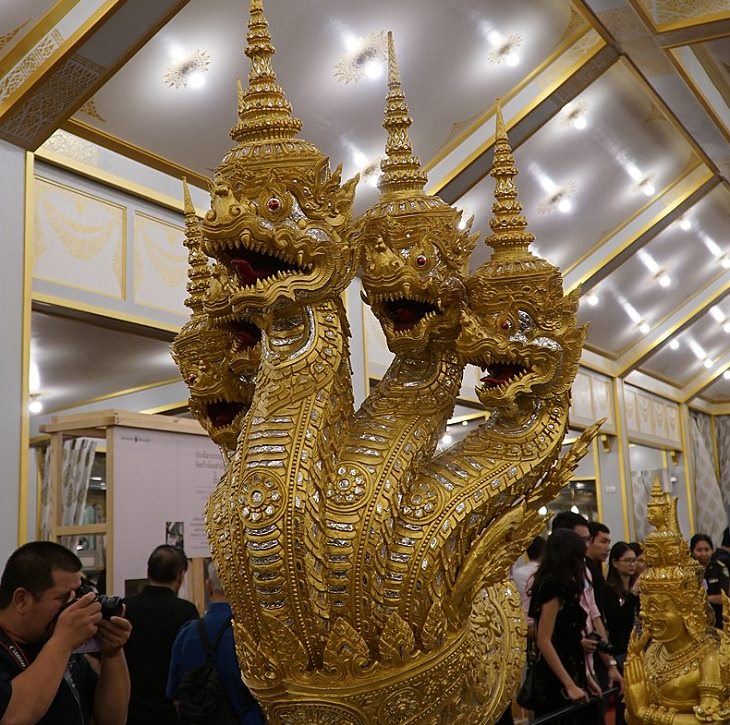
(By Z3144228, Wikimedia Commons)
The Nāga Dragon is a staple figure in Hinduism. The word Nāga means “cobra” or “snake”. They are serpent-like creatures that resemble cobras. These dragons are known to take the form of a human-serpent hybrid, though many times they appear in stories in an entirely human or snake form.
They are considered to be powerful divine or semi-divine deities and live in an underground realm referred to as the enchanted underworld, usually found near large bodies of water. Their lairs are filled with gems and other valuables that are called Naga-loka, and the Nāga are considered guardians of the treasure. In Buddhism, the Nāga dragon usually appears in the form of a multi-headed cobra.
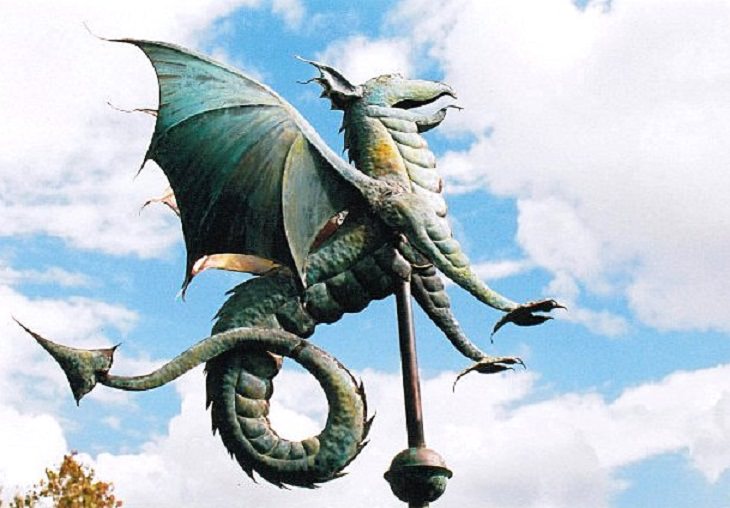
(By Smithvane, Wikimedia Commons)
You’ve likely seen this legendary dragon on more than one occasion as it is found on numerous emblems, logos, and even as mascots for schools and athletic teams all across North America and the United Kingdom. The wyvern is a two-legged winged dragon that has an arrow-tipped tail. It has often not been considered as a dragon as it so differs from the currently popular four-legged fire breathers.
The Wyvern is still a major part of English heraldry and drawn on coats of arms. Its name is believed to have originated from Middle English, prior to the 15th century. It also gained especial popularity in the Medieval ages. Some historians suggest the earliest depictions of this dragon were as a flying snake.
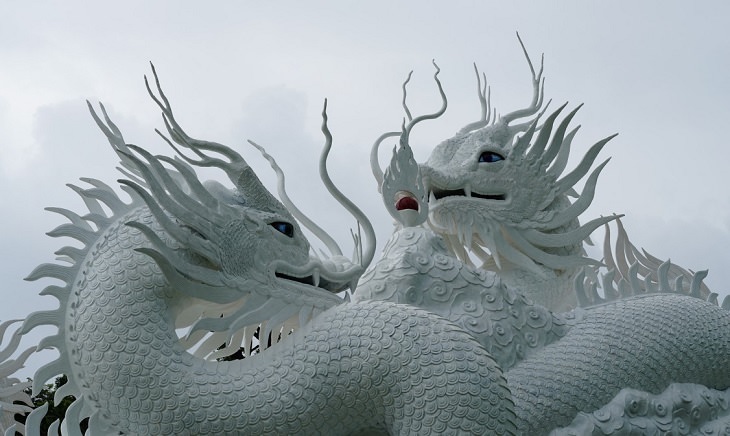
(Pxhere)
Rồng is the Vietnamese dragon, a highly symbolic creature in folklore that is believed to be a bringer of rain and therefore in control of the harvest. It has an elongated and curving body divided into 12 sections to symbolize each month of the year. In a largely agricultural nation, this dragon signifies growth.
Rồng is also the symbol of Yang in Vietnamese culture, representing life, the universe, and existence. It is always depicted with a strong mane and an open mouth. Some legends claim these dragons hold gems in their mouths that signify nobility and humanity. They also represent the nation’s power and prosperity, as a symbol of the emperor.
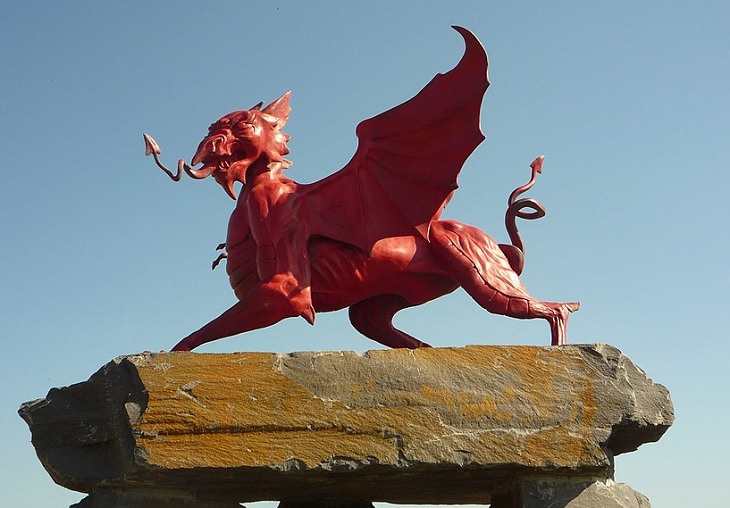
(By Rickfive, Wikimedia Commons)
This strangely named beast is the Welsh dragon and also goes by the name Y Ddraig Goch. Y Ddraig Goch is Welsh for “the red dragon”, which is why this winged monster is always painted in bright and bold red shades. It is also featured quite prominently on the National Flag of Wales as it is believed to represent all things Welsh.
It is believed to have been an important creature for numerous ancient Celtic leaders, including the famed King Arthur. The coat of arms for the English Crown was known for bearing the emblem of the Y Ddraig Goch as an attendant or supporter when the Tudor Monarchs were in power.
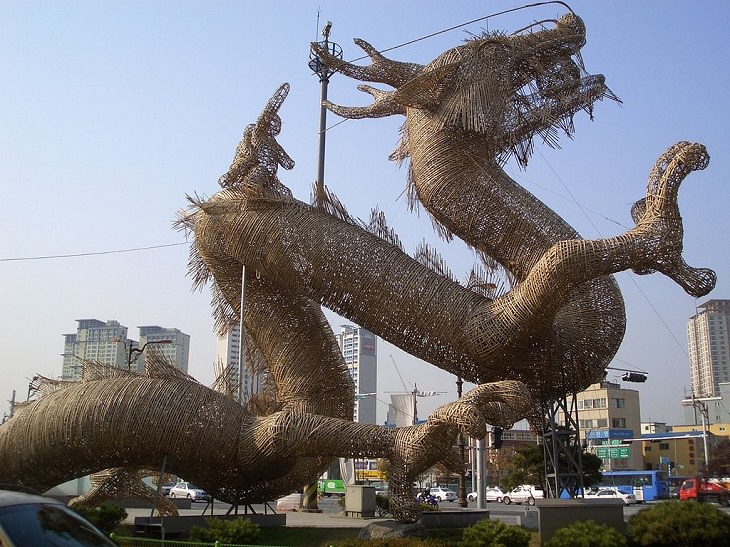
(By Himasaram, Wikimedia Commons)
The Imugis, also known as the Imoogis, are the sea serpents of Korean folklore. In Korean mythology, dragons generally symbolize good fortune and auspiciousness in all things related to agriculture and water. Most Korean dragons are also very similar in appearance to other East Asian dragons, like Chinese and Japanese Dragons.
The Imugis, however, are unique among the unique. They are depicted as massive serpents resembling pythons and they typically dwell only in caves and in water. They are seen as benevolent creatures but also as lesser dragons on a journey to become full-fledged dragons. Some folklore depicts them as dragons cursed to be hornless and therefore never truly a real dragon.
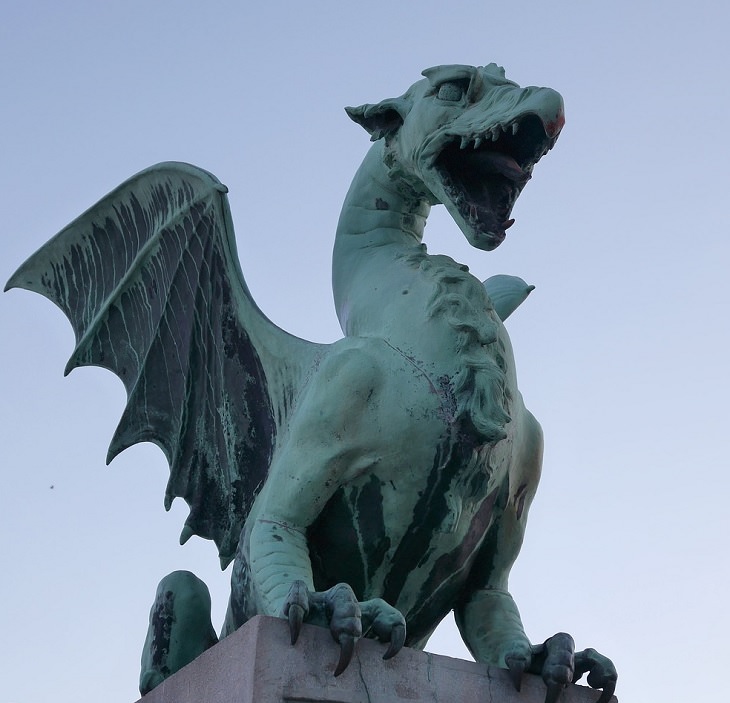
(Needpix)
Slavic Dragons include any dragons that make their way into the folklore of the many Slavic countries, like Russia, Ukraine, and Czechoslovakia. This dragon across these varied nations goes by similar names like zmei, zmiy and zmaj. In Poland, it is called Smok.
It is often depicted as part-human and part-beast. Many folklore tales describe it as a snake that merged with other creatures to become a dragon. Stories of Slavic Dragons often describe them as the villain, wooing women and creating chaos. Other versions of them are as controllers of the weather and protectors.
Share the twisted tales of these dragons
with mythology-maniacs!